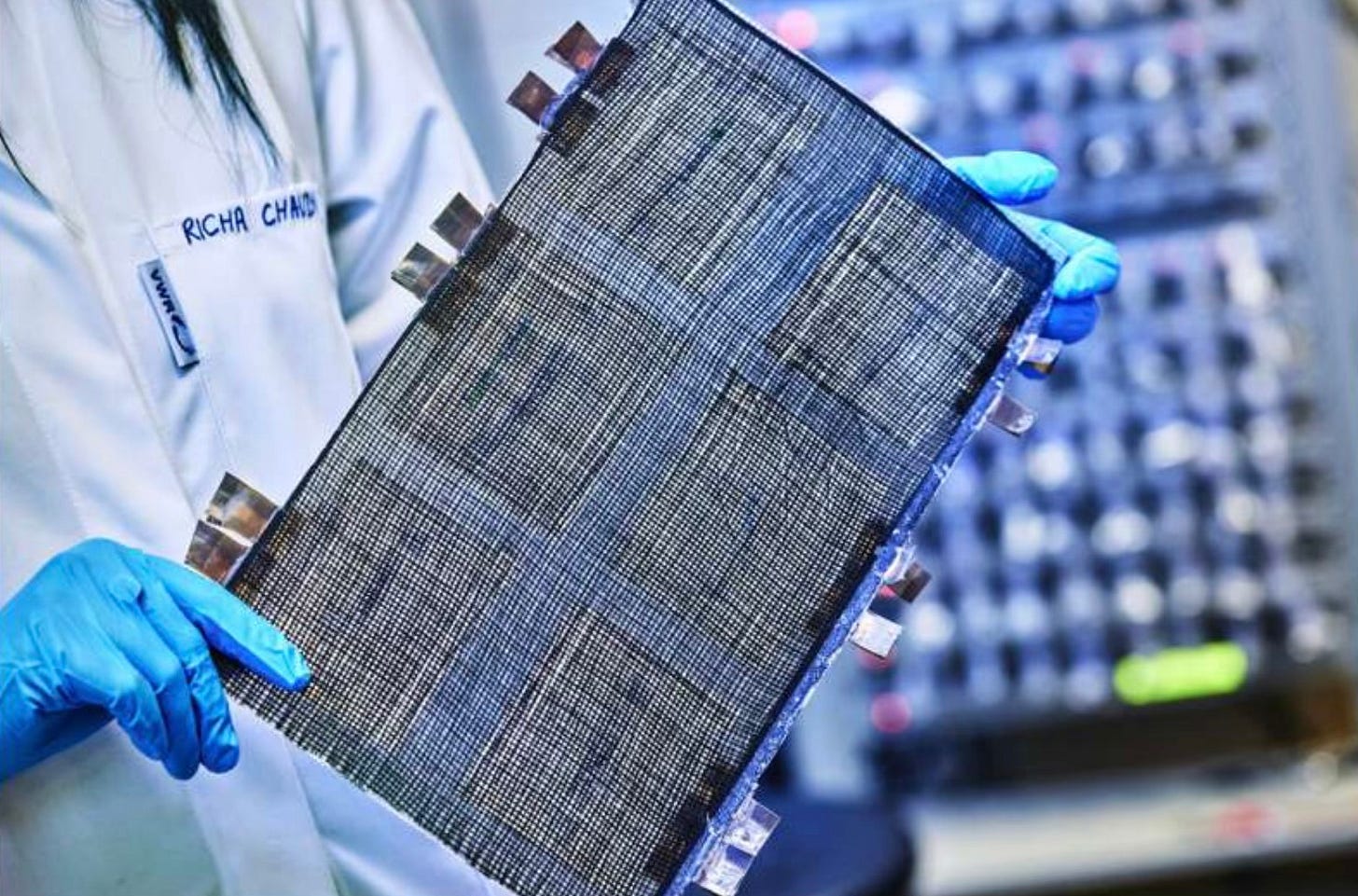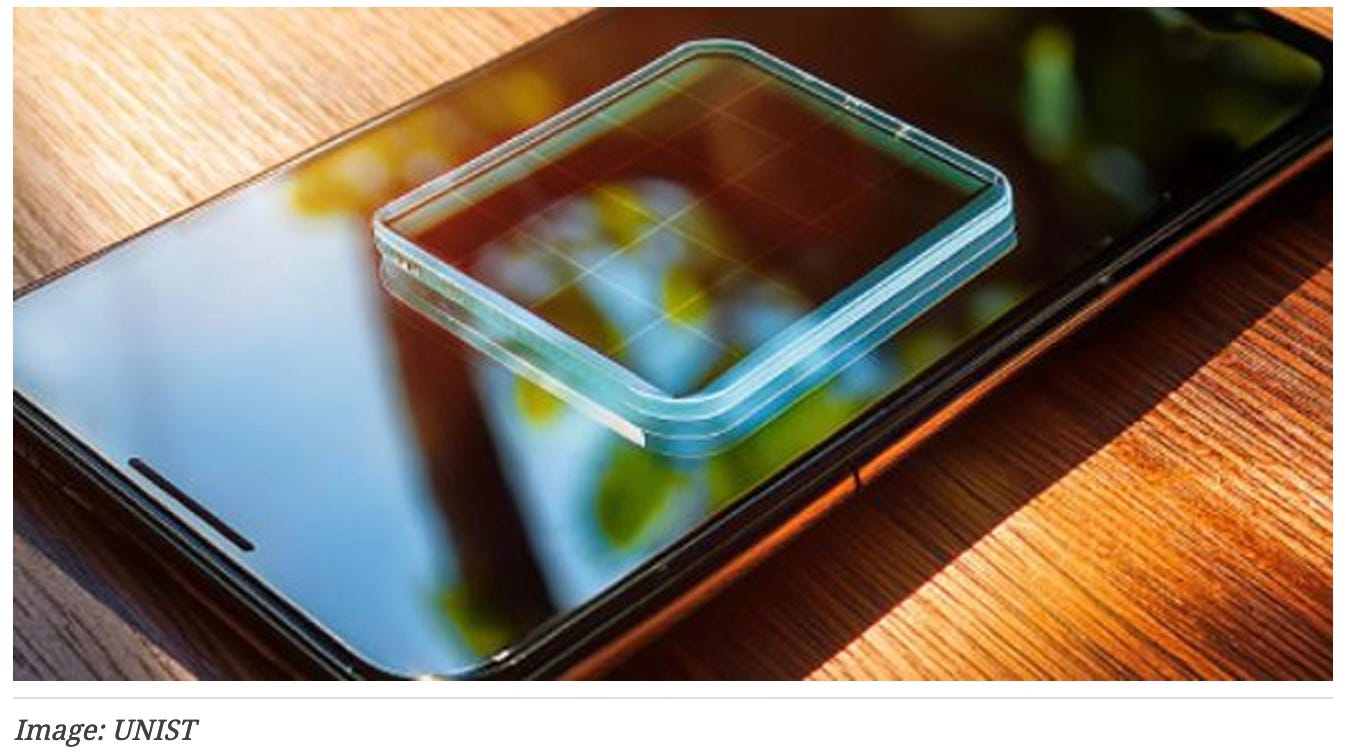This week we investigate a drug free method of treating ADHD. We examine a new way to build batteries into the structure of phones, laptops and EV’s. We discover a new transparent solar cell that will allow our phones to be recharged by sunlight. No need to find a charging point just leave the phone in the sun. Finally we look into a new way to reduce the number of satellites in low earth orbit. Astronomers in particular will welcome this advance.
Drug Free ADHA Treatment
Sydney based startup, Neurode has developed a non drug based intervention for ADHD. An estimated 366 million people worldwide are diagnosed with ADHD. The actual number is probably way way higher as many people go undiagnosed. Few in my generation were diagnosed as the condition was not understood.
The current way to deal with ADHD is via drugs. Neurode is a new drug free method of managing ADHD. The Neurode headset delivers a personalized dose of non invasive brain stimulation that balances the under activity in the prefrontal cortex that is related to issues with executive function. This is combined with brain imaging that allows symptom improvement to be tracked over time.
ADHD is a dis-regulation of areas in the prefrontal cortex. This area is critical for executive function of the brain like attention and impulse control. There are 5 areas of the prefrontal cortex with different functions. The prefrontal cortex activity is closely associated with ADHD. People with ADHD have certain areas that are less active. When we focus we use a lot of the brains resources, when we are distracted these areas are less active.
To treat ADHD we need to modulate brain activity. Drugs like Adderall and Ritalin increase your brain activity by increasing neurotransmitter activity however it is very difficult to target neurotransmitters in one brain area leading to many side affects.
The alternative is to increase brain activity via stimulation with electrical signals. Neurode uses these electrical signals to balance the activity in the prefrontal cortex. This helps improve focus, memory and impulsive behavior. Regular use of Neurode also induces neuro plastic changes which strengthen neuro connections over time in a similar way that exercise improves muscle strength.
Brain imaging via functional neuro infrared spectroscopy allows Neurode to know how your prefrontal cortex activity is balancing over time. All it takes is a 20 minute per day session of brain stimulation from home. No drugs are involved. The brain stimulation is personalized based upon your progress.
If any readers would like to test out the product please sign up on their website https://www.neurodelabs.com There will be multiple opportunities to test out the product. Please use the referral code CRAIGCARLYON.
Structural Batteries
A team at Chalmers University in Sweden have developed a structural battery that may halve the weight of a laptop or increase the driving range of an EV by 70% on a single charge. The secret is building the load bearing structures from a material that can also function as a battery.
The battery is made from a carbon fibre composite that is as stiff as aluminum and energy dense enough to be used commercially. The team first announced their development of carbon fibre electrodes for lithium-ion batteries in 2018. Since then they have worked to increase the stiffness and energy density of the composite material.
The team has achieved an energy density of 30 watt hours per kilo (Wh/kg). This is lower than commercial batteries however as the battery is now part of the construction the overall weight of the vehicle is greatly reduced. Thus less energy is required to run an electric car.
Vehicles require significant structural strength for safety requirements. The team has increased the stiffness of the composite to 70 gigapascal (Gpa, a measure of structural stiffness). This means that it can carry the same weight as aluminum with lower weight.
The use of carbon fibre to conduct electrical current has removed the need for copper or aluminum current collectors. Additionally the battery does not use cobalt or manganese, reducing cost and supply chain issues (Cobalt in particular comes from countries that use significant child labor and production creates a lot of pollution).
A company has been created to commercialize the product via Chalmers Venture Company. However a lot more work is required to take the composite from the lab to mass production. It is likely that phones and laptops will use this type of product initially. Imagine a phone as thick as a credit card. The transport industry however will likely find the greatest benefit. Initially with some components being made from the product. It will take some time and a lot of safety testing to incorporate the composite into structural components of cars however the potential is there for much more efficient electric vehicles.
Transparent Solar Cells
A team at Ulsan National Institute of Science and Technology in Ulsan, South Korea have developed a technology to directly charge a smartphone from its’ screen. The new transparent solar cell has glass like, colorless and transparent properties.
The colorless and transparent design is achieved by introducing an ‘all back contact’ design. All of the components of the solar cell are on the back of the cell. A glass like transparent crystalline silicon cell that is wire free forms the “metal wire free” solar module.
The cell achieves a power energy conversion of 15.8% (the current most advanced solar panels achieve up to 26%) which is enough to recharge a mobile phone via natural sunlight.
The team expects that the solar glass will be able to be used in various industries and in small devices in addition to buildings and automobile glass.
Reducing the Number of Low Earth Satellites
A range of companies are sending tens of thousands of satellites into low earth orbit (LEO). For example, SpaceX, Amazon and others are bringing the internet to the world via LEO satellites. The problem is the need for a one to one, user to satellite at a time. This limitation is due to the antenna arrays that can only manage one user at a time.
The solution to date has been to either launch constellations of satellites (to the chagrin of astronomers that bemoan the interference with telescopes) or large satellites with many different arrays that allow a wider coverage. Both options are expensive and technically complex. Additionally there is only so much room up there. LEO is already getting crowded. There are already 6,000 Starlink satellites from SpaceX with many tens of thousands more planned.

The new system can be incorporated into existing satellites. It also allows for simpler designs for new satellites. There could be fewer satellites or smaller satellites. The current paper is purely mathematical at the moment however field tests on underground antennas have shown that the math works. The next step is to implement this in a real satellite and launch it into space.
Paying it Forward
If you have a start-up or know of a start-up that has a product ready for market please let me know. I would be happy to have a look and feature the startup in this newsletter. Also if any startups need introductions please get in touch and I will help where I can.
If you have any questions or comments please comment below.
I would also appreciate it if you could forward this newsletter to anyone that you think might be interested.
Till next week.





